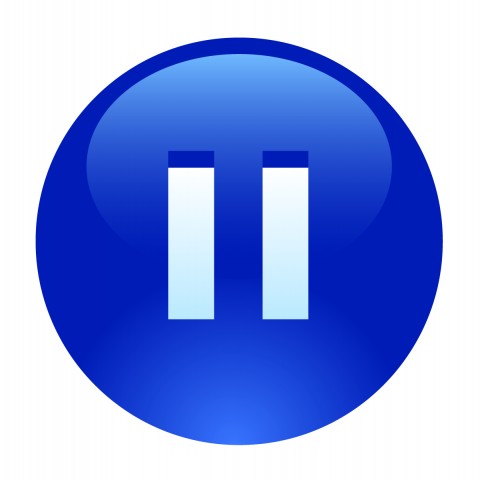
We all grow up learning and using our mother tongue, but this doesn’t necessarily mean that we do a perfect job of utilizing it—especially when it comes to conversations.
For example, do you know how many filler words you use when conversing?

In this article, we’ll discuss what filler words are and why we use them. We’ll also introduce you to the most common Turkish filler words, list the pros and cons of using them, and give you some advice on how to limit their use while still employing them for natural conversations in Turkish.
 Table of Contents
Table of Contents
- What are filler words and when do we use them?
- The Top Turkish Filler Words
- Pros and Cons of Filler Words
- How to Control Your Use of Filler Words
- Discover More About Turkish on TurkishClass101.com
1. What are filler words and when do we use them?
Fillers are sounds, words, or short phrases that are most often used to “fill” a pause in speech. Some of them might have meaning when used by themselves or in other contexts, but lack any real value when used as a filler. They’re usually specific to a language, though they can also be regional, communal, or cultural.
When to use them
If they don’t add anything to the sentence, then why do we use them?
One reason is that it’s habitual: We tend to use them without thinking. However, there are several other reasons. Here are some circumstances under which you might use fillers:
- When you need to buy some time while you find the right word or phrasing
I’m sure that sounds similar to “um” and “ehm” are used in most languages for this purpose. It may be okay to use them once or twice in a conversation, but overusing them can really become annoying.

What is next?
- When you don’t know how to complete a sentence
There are some cases where we don’t want to finish a sentence or don’t know what to say to complete it. In such cases, fillers come to the rescue.
- When you’re uncertain about something
Sometimes fillers help us hide any uncertainties we have during a conversation.
- When you need to speak more indirectly in order to be polite
- When you need to approach delicate topics gently
2. The Top Turkish Filler Words
Below are some filler words in Turkish that you can use if you really need to:
#1
| Turkish | Literally | English |
| Eee | – | “Um” / “Ehm” |
As in English, this filler is used to buy some time so the speaker can think about what they want to say next. It gives the speaker time to organize their thoughts.
Example:
İstatistiklere göre Türkiye’de Corona virüsü nedeniyle, eee, 10 bin 27 kişi öldü.
“According to the statistics, in Turkey, umm, 10027 people died because of the Coronavirus.”
In this example, the filler eee is used by the speaker to buy time while they try to remember the exact number.
#2
| Turkish | Literally | English |
| Şey | “Thing” | “Well” |
Şey normally means “thing,” but when it’s used as a filler, it just helps the speaker buy some time to find the right word(s).
This can be a lifesaver for Turkish learners. If you can’t remember a word, just throw this one into the conversation—a native speaker will complete the thought for you!
Example:
A: Bugün kaç soru çözdün? (“How many questions did you solve today?”)
B: Şey, galiba 30. (“Well, I think 30.”)
Here, it’s used to gain time to remember the number of questions solved.
#3
| Turkish | Literally | English |
| Falan filan | – | “Blah blah blah” / “And so on” |
You can use this Turkish filler if you don’t want to give more examples or if you don’t know how to complete a sentence. Do keep in mind, however, that this filler reduces the impact of what you’re saying. A better alternative might be ve benzerleri, ve bunun gibi (“others, etc.”).
Example:
A: Günün nasıl geçti? (“How was your day?”)
B: Evi temizledim, alışverişe gittim, ders çalıştım, falan filan işte. (“I cleaned the house, went shopping, studied, and so on.”)
In the example, the speaker probably did even more things during the day, but they cut their speech short by using falan filan.
#4
| Turkish | Literally | English |
| Yani | – | “This is to say” / “In short” / “Well” |
We use the Turkish filler word yani when we think something we said was not clear and we need to give further explanation. In addition, we can use it if we’re uncertain about what we’re saying.
Example:
A: O iyileşti mi? (“Did he recover?”)
B: Yani, sanırım. (“Well, I think so.”)
In this case, the filler expresses uncertainty.
#5
| Turkish | Literally | English |
| Ivır zıvır | – | “Knick knack” |
This filler is used to define multiple objects when we either don’t want to name each one or don’t feel like mentioning the objects at all.
Example:
A: Marketten ne aldın? (“What did you buy from the market?”)
B: Ivır zıvır. (“Knick knacks.”)
In this case, the person who went to the market doesn’t want to mention what he/she bought there.
#6
| Turkish | Literally | English |
| İşte öyle bir şey | – | “Something like that” |
We use this filler when there’s uncertainty or when we don’t want to talk about something any further.
Example:
A: Sana yalan söylediği için mi onunla konuşmuyorsun? (“Are you not talking to him because he lied to you?”)
B: İşte öyle bir şey. (“Something like that.”)
Here, the person doesn’t want to talk about the real reason he/she is avoiding their friend.
#7
| Turkish | Literally | English |
| Zımbırtı | – | “Thing” / “Stuff” |
We prefer to use this word for unnecessary or dysfunctional objects. We can also use it if we don’t know the name of an object or if we can’t remember it.
Example:
Şu zımbırtıyı verebilir misin lütfen?
“Can you give me that thing, please?”
The speaker either doesn’t know the name of the object or can’t remember it.
#8
| Turkish | Literally | English |
| Zamazingo | – | “Thing” / “Thingumabob” |
This is another common filler used when we don’t know or can’t remember what something is called.
Example:
Şu zamazingoyu gözümün önünden kaldırabilir misin lütfen?
“Can you take that thing out of my sight, please?”
The person either doesn’t know the name of the object or can’t remember it.
#9
| Turkish | Literally | English |
| Söyleyiver şunu / Sen söyle | “Tell me that” / “You tell me” | “You name it” |
You can use this phrase if you’re trying to remember something.
Example:
A: Toplantıda kimler vardı? (“Who were in the meeting?”)
B: Jack, Mary, Lucy, Paul ve bir de, sen söyle, satış departmanındaki yeni gelen adam. (“Jack, Mary, Lucy, Paul, and, you tell me, the newcomer in the sales department.”)
The person either doesn’t know the name of the person or can’t remember his name.
#10
| Turkish | Literally | English |
| Anlarsın ya | “You understand” | “You know” |
We use this one when we don’t want to complete a sentence.
Example:
İkisi sürekli beraberler. Anlarsın ya!
“The two are always together. You know!”
The person doesn’t want to talk further here, but he/she is implying that there is something going on between the two.
#11
| Turkish | Literally | English |
| Ondan sonra | – | “After that” / “Then” |
This Turkish filler is used to buy some time so that we can remember the next thing we’re going to say.
Example:
Sabah Terry ile okula gidiyorduk, ondan sonra işte, bana beni sevdiğini söyledi.
“Terry and I were going to school in the morning, then he told me that he loved me.”
Ondan sonra (“then”) is used here as a filler word because it’s not explaining what happened next; it’s rather explaining what happened during the action.
3. Pros and Cons of Filler Words
Pros
If used sparingly, filler words can be an advantageous addition to your conversations. The greatest benefit of using them as a language learner is that they’ll help your speech sound more natural. As long as you can control and limit their usage, there’s no need to eliminate them.
Let’s take a look at more advantages:
- Native speakers might think you have a good grasp of the language, and this will make you more confident.
- You’ll sound cool and more natural.
- It will help you gain time when you can’t remember something.
- It might even sound relatable.
Cons
All of the advantages we discussed might turn into disadvantages if you use filler words in formal meetings, conferences, or interviews. Below are some drawbacks you might encounter:
- If you’re speaking at an event and use filler words a lot, the audience might become bored and disengaged; they might also think you’re not well-prepared, less talented, and even repellent.
- If you use them in a formal meeting or an interview, you won’t leave a good impression.
- You might look confused and less confident.
- It might reduce your credibility and prestige.

4. How to Control Your Use of Filler Words
Again, you don’t need to avoid filler words completely. All you need to do is be aware of how, when, where, and how frequently you use them and learn to limit their usage. Here’s how you can prevent them from getting out of your control:
- If using filler words is habitual for you, then becoming aware of it will help you regain control. If you don’t know when you tend to use filler words, you can record your speech or have somebody listen to you, so that you can find out where you get stuck. This will make it easier for you to restrict your filler word usage in those situations.
- Don’t be stressed and try to relax during your speech.
- It’s okay to slow down and pause for a few seconds to think. It will give you time to gather your thoughts and choose your words.

- Filler words are usually used in longer and more complicated sentences. Therefore, try to use simpler, shorter sentences.
- Watch and listen to lecturers, spokesmen, debaters, or public figures to figure out how they control their speech tempo.
- Using your body language might be a good way to show that you’re thinking without using fillers.
- We tend to use filler words when we switch from one idea to another (in other words, during transitions). Therefore, you can plan your transitions in advance. For example: “Let’s move on with ___,” or “Let’s switch to ___.”
- If you’re giving a professional speech, you’re likely to use the most fillers during the Q&A session because you’ll need to respond to things you might not be prepared for. Don’t hesitate to use honest phrases like, “Let me think about that for a second.” Believe me: The audience will appreciate your sincere approach as you consider their question.
- Make sure to practice before you get in front of the audience. The introduction and conclusion usually draw the most attention, so make sure to practice these the most.
Do you want to learn more phrases that can help you sound like a local? Then see our vocabulary list of the Essential Idioms That Will Make You Sound Like a Native Speaker.
5. Discover More About Turkish on TurkishClass101.com
We hope you now feel more confident about using filler words in Turkish and have a better idea of how to limit their use in your own language. Which fillers do you use most often? Let us know in the comments!
If you’d like to know even more about Turkish vocabulary and conversation, then you need to bookmark TurkishClass101. We provide numerous audio recordings, tons of vocabulary lists, and a variety of free resources (like this dictionary) you can refer to.
Don’t forget that there’s also MyTeacher, a Premium PLUS service that allows you to learn and practice with a private teacher.

Better still, you can download the app for free and use it wherever you are.
Last but not least, please continue to provide us with feedback about all the resources provided at TurkishClass101.com!










